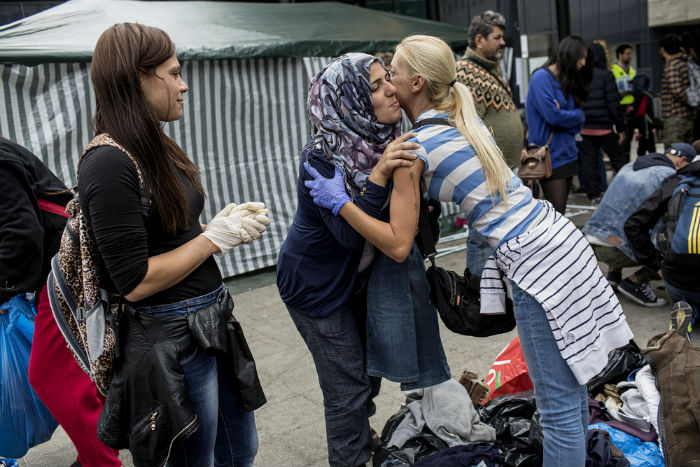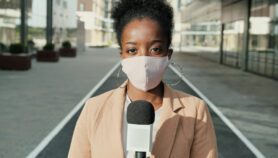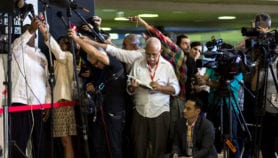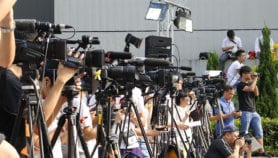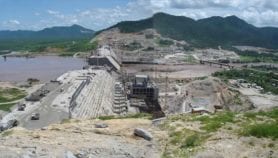By: Anita Makri
Send to a friend
The details you provide on this page will not be used to send unsolicited email, and will not be sold to a 3rd party. See privacy policy.
Take any crisis that makes the headlines — the flow of refugees in the Middle East, Europe and the Horn of Africa; outbreaks of deadly or devastating viruses such as Ebola or Zika; drought emergencies in Ethiopia and Malawi. Does journalism help to explain them? Or solve them?
These questions were asked at the Polis conference of the London School of Economics on 21 April. The day focused on the refugee crisis in Europe and the Middle East. And the title, Journalism and Crisis, was meant to reflect both the humanitarian crisis and the crisis in reporting brought about by the digital age — the “leaps in technical capability”, new finance structures and explosion of social media power that Columbia School of Journalism director Emily Bell powerfully charts.
This double meaning reverberated throughout the day’s discussions. And looking at how the refugee crisis is reported was revealing of the state of journalism. But this is not merely about journalistic self-reflection or navel-gazing. It’s about the difference journalism makes to how societies deal with crises.
Information and inaction
Or does it make a difference?
In a keynote speech, distinguished British journalist Jon Snow kicked off the event by questioning the link between information and action. There are so many sources of information, people know the facts about the refugee crisis, but politicians do nothing about it — and, crucially, the UK public no longer bothers to write to them, he said.
It’s a gloomy observation. People are better informed and more prepared to question than ever before. “The problem is we [citizens] are so busy at our [computer] stations that we don't bother to communicate with each other,” he said. We’ve been “subdued by the digital age”.
It’s not enough to tweet, blog or use Facebook, Snow told a packed auditorium of journalists and LSE students — for the majority of whom, I suspect, social media is the bread and butter of their work. You may vent your views and feel good about doing so, but it’s not the path to real change.
Snow raised the question of how to harness what’s done in the digital age to change political and social realities.
The rest of the day left the question hanging in the air, looking instead at the nitty-gritty of how to report on crises. But the observations it was peppered with sketched out developments in the media landscape that might lead to new pathways to change.
Telling human stories
The panel that followed Snow’s keynote shed some light on what reporters have to grapple with when covering the refugee crisis. One point that kept coming up was that journalists strive to keep the story ‘alive’ and fresh, which is challenging with situations that are politically sensitive and go on for years.
One-in-four people in Lebanon are refugees and their stories involve chronic trauma, said the Guardian’s Kareem Shaheen — half of teenage refugees there have contemplated suicide. So we can’t give up; we have to look for fresh ways to tell their stories.
The power of the human story to move the public came up often. Milène Larsson, a journalist with Vice magazine, said she regularly receives emails from people asking how they can help after they’ve seen a report. And when you work with individuals affected by the crisis, she said, you build a relationship, you offer helpful information and you stay in touch through Facebook.
So while social media ‘clicktivism’ culture may be diverting focus away from traditional routes to action, there is also a silver lining. Journalists use social media to reach more of their audience more directly than ever before, and keep track of the afterlife of their story. Citizens use them to educate each other and build movements. As well as writing to their local politician, they can now tweet at their representatives.
The wider picture
In reality, of course, the path to change isn’t simple. People have vastly different reactions to the same story, and the refugee crisis is a good example of that.
On this point, journalist Anna Masera, from Italian newspaper La Stampa, gave a compelling reason to go beyond the human angle. Publishing moving human stories without explaining or giving data and context, she said, fuels the polarised reactions we often see around refugees, either fostering compassion or racism.
This means that the political ‘why’ and ‘how’ of the crisis is also important. CNN’s Clarissa Ward said you can’t tell the story of people washing up on the Greek island of Lesvos without examining how the crisis began.
“Neutral journalism pays dividends over time by building trust and contributing to a better informed public, who are then more likely to take an active and enlightened stand on social issues.”
Anita Makri
That context goes beyond the conflict and political narratives that gave rise to the crisis: it’s also about the issues facing communities hosting refugees and how refugees deal with hostility to them. And it’s important to do that without fuelling tensions and xenophobia.
Context and balance — giving both sides of the story — might not change minds or move people to action. The idea that journalism should spur action is open to question — if journalists have overt agendas, this can undermine objectivity. But neutral journalism pays dividends over time by building trust and contributing to a better informed public, who are then more likely to take an active and enlightened stand on social issues.
Ultimately, Ward said, good storytelling is what matters — just find the story and get creative telling it. “There is a hunger for good, neutral, nuanced reporting that goes the extra mile to be creative.” And the digital world offers plenty of opportunities for novel ways of telling stories.
Spanner in the works
Significant as this is, calls for nuanced journalism are age-old. What is new are imaginative digital platforms and citizen journalism. Together with social media, these trends throw a spanner in the works for professional communicators and threaten the viability of online publications.
I keep seeing stories shared by volunteers involved in helping refugees; they are rich in compassion and powerful first-hand experiences. They help raise awareness and encourage others to act. But they often lack the distance and critical stance of professional reporters.
A similar trade-off holds for 'advocacy journalism': stories by corporations, governments or organisations pushing their own agendas.
Médecins Sans Frontières’s Polly Markandya summed it up with a remark that social media is changing the landscape of journalism fundamentally: front-line volunteers working with refugees in Europe have challenged traditional aid agencies and media organisations in the way they are flexible and responsive, and in the way they fundraise.
They also challenge us to think differently about journalism practice and pathways to change. Who is now a journalist? How far should stories go past informing? What will change minds, get politicians to ask questions, fight xenophobia or protect human rights?
Stories by volunteers tend to directly appeal to sentiment or advocate support, and professional journalists shouldn’t abandon fundamental principles of balance and objectivity to follow that. But media organisations could take a step beyond the story by adding resources to each article where readers can learn more about the issues and organisations involved.
As the lines between professional and citizen journalism continue to blur, the need will only grow for digital platforms to be transparent about who speaks to the public through their pages, and for the public to be aware of the need to dig deeper to find where their news comes from.
Anita Makri is opinion and special features editor at SciDev.Net. @anita_makri


